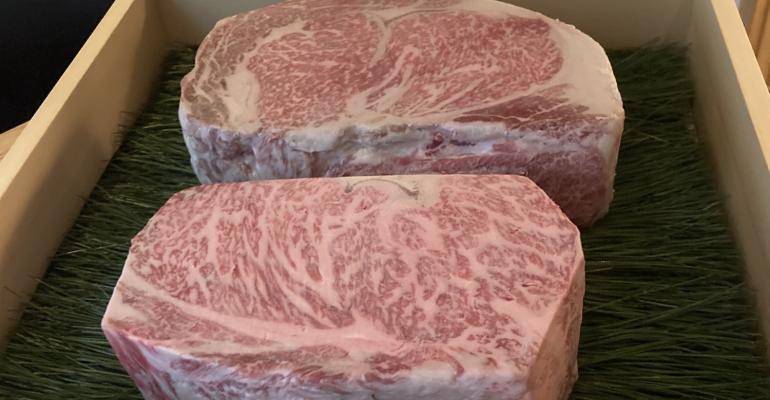How long have we been talking about a looming recession at this point? Eight months? A year? I certainly started bracing for one when banks started failing in March, but the economy actually seems to be chugging along pretty well.
It’s not doing awesomely, mind you. With Q2 earnings season well underway it’s clear that April-June was a mixed bag. Traffic is declining at many restaurants as consumers are apparently fed up with rising menu prices. But many economists seem to think that we’re not going to dip into a recession in 2023. Maybe next year, but who knows?
However, restaurant goers, particularly lower-income ones, are acting a bit recessiony, which means they’re responding more to “value pricing,” but less intuitively it also means that they’re interested in beef.
You see, during times of economic or political uncertainty (and apparently during upticks in natural disasters and heightened awareness of climate change, as we’re seeing now), consumers engage in emotional self-care. They might have to delay buying that new car or scale back on vacation plans, but they can (and do) splurge on a nice meal, and quite often that means beef.
I have already reported on the surge in interest in Wagyu, the Japanese beef breed prized for its high level of marbling and unctuous mouthfeel, but interest in beef in general is high.
A friend of mine who works for the consumer press, and whose job is, among other things, to generate click bait, says anything mentioning casual-dining beef specialists such as Texas Roadhouse or Outback Steakhouse are guaranteed traffic drivers for his web sites.
Restaurants have noticed, too. In discussing BJ’s Restaurants earnings for the quarter, CEO Greg Levin said ribeye steaks are now one of the chain’s top selling items.
Beef doesn’t need to be sold at a premium to imply luxury. Dine Brands executive Tony Moralejo pointed out in that company’s earnings call that Applebee’s promoted steak on its “2 for $25” value platform in June.
“It’s compelling and it provides the value guests are seeking in this environment,” said Moralejo, who is president of the company’s casual-dining division, during Dine Brands’ quarterly earnings call.
But if a beef item is kind of fancy, customers are often inclined to gravitate to it even more. A case-in-point is Shake Shack’s White Truffle Burger — topped with fontina cheese, white truffle sauce made with Regalis truffle oil, and fried sweet onions, starting at a premium price of $8.99 — which CEO Randy Garutti credited for driving sales at the chain when the burger was available from February through April.
Although many restaurant customers are pushing back against higher prices, they might just have to deal with those prices when it comes to beef, the cost of which continues to go up as a result of the aftereffects of drought in Southwestern cattle country: Droughts tend to push cattle ranchers to slaughter early to save on the cost of feeding and watering, resulting in temporarily lower prices as that beef floods the market, followed by a beef shortage as the herds are rebuilt. That’s where we are now.
It takes about three years from insemination to slaughter for beef cattle, so rebuilding those herds takes a while.
However, in the past, during periods of high beef costs, consumers have gone ahead and paid for it anyway, especially when it comes to steak. I still remember around 20 years ago when my managing editor asked me to write a story about how, due to rising beef prices at the time, customers were switching from steak to other entrées. So I called a bunch of chefs and asked them what was going on, and they said that when their customers wanted steak there was no suitable substitute. They just paid extra and got their steak, and that’s the story I wrote.
Will the modern, often more environmentally aware, consumer respond in the same way? Time will tell.
Climate change is a factor when it comes to beef. Cattle, as part of their normal process of digesting grass, belch a lot of methane, which is a potent greenhouse gas, and it’s pretty widely accepted that our widescale consumption of beef is a significant contributing factor to global warming.
But some cattle producers are working on mitigating that through “intensive grazing,” a process of rotating cattle through different pastures that keep the grass strong: As cattle eat grass, they stimulate growth of that grass, and it doesn’t just grow upward; it reinforces its roots that dig deeper into the ground, sequestering more carbon. Some advocates of intensive grazing say that, if done properly, raising cattle can be carbon-neutral, and it allows us to use land that for various reasons isn’t suitable for growing fruit, vegetables, or grains.
It's something to consider as you have conversations with your beef suppliers.
Contact Bret Thorn at [email protected]





